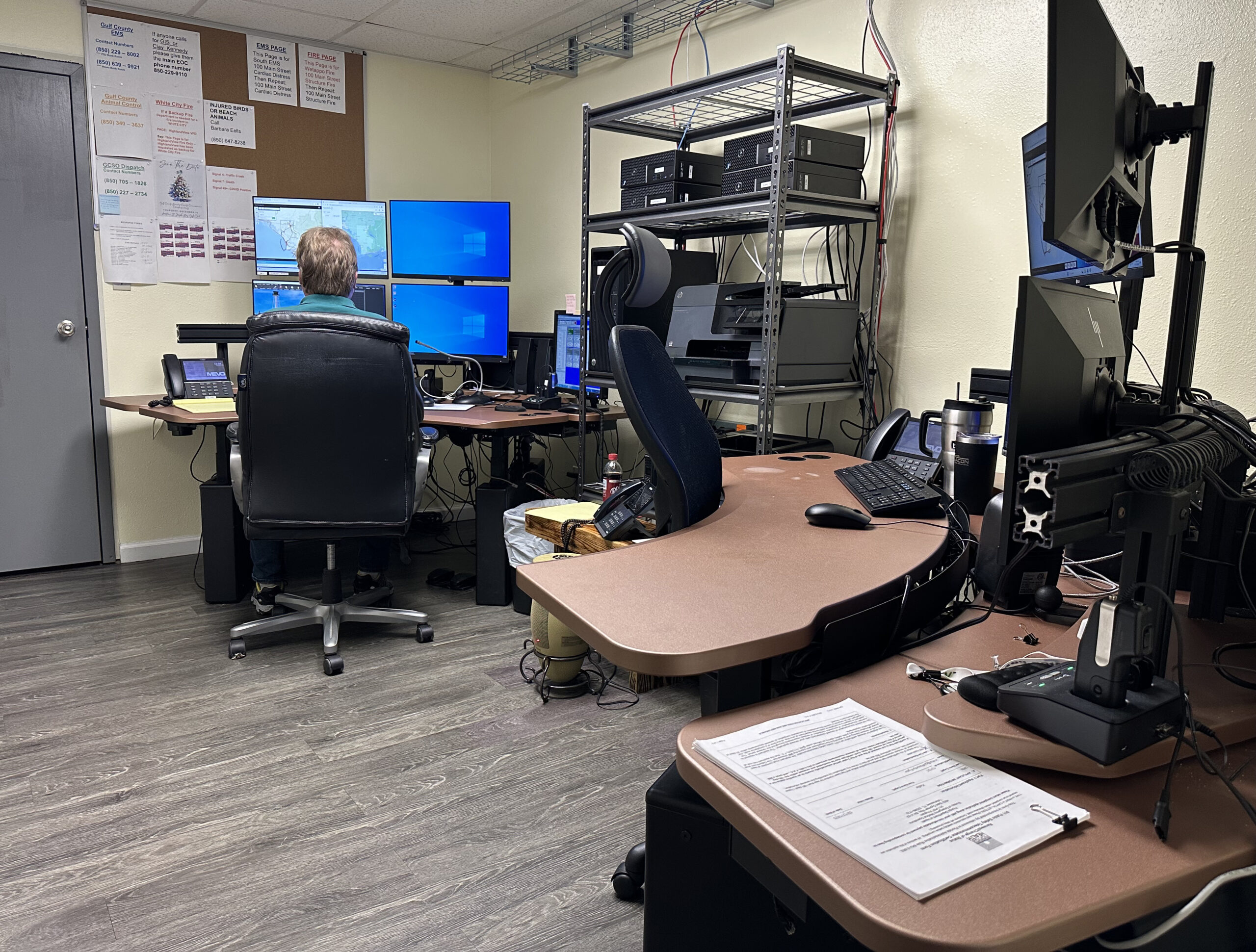Forgotten Coast readies for 911 upgrade
Gulf County will be the first to flip the switch, followed not long thereafter by Franklin, and by next year’s hurricane season, both counties will have a newly revamped 911 emergency communication system that will eclipse the current one in speed and versatility.
“Folks can text to 911, and the GPS (global positioning system) capabilities are off the charts,” said Matt Herring, Gulf County’s emergency management director. “The current one can give a dispatcher within several miles of where someone is. (The new one) will show on a map within a couple of feet.
“These are all added features that make 911 amazing in and of itself,” he said.
The new Next Generation 911 (commonly referred to as NG911), a digital, internet protocol–based system, will replace the analog 911 infrastructure that’s been in place for decades.
Funding for the new NG911 system has flowed down from state and federal sources, so that Gulf County is getting $850,000 over five years to implement it.
Renee Brannan, Franklin County’s 911 coordinator and director of communications for the Franklin County Sheriff’s Office, said Franklin is receiving a lesser amount, because it is divvied up based on population size.
Brannan said that she plans to go before the county commission before the end of the year to secure the release of surplus dollars for 911 needs. In addition, Sheriff A.J. Smith said he is looking into securing a Triumph grant to implement a new radio system for all first responders that will improve their interface with one another.
It’s all part of north Florida’s piece of a statewide effort to convert emergency communication to a computerized age, where calls are no longer relayed by telephone but are lightning quick, aided by the latest in digital technology.
“During Hurricane Michael, (they learned) some calls were routed to Canada,” said Herring. “So the state of Florida looked at this and followed a model from a couple other states. We now can transfer to our seven closest counties because the federal and state gov\ernment are mandating a new 911 system, and paying for it.
He said that Region 1, which extends from the Apalachicola River west to Pensacola, will include the first 10 counties in the state to implement NG911, shaving valuable seconds off the time it takes to route calls. “This system will cut things down to milliseconds,” he said. “The guts of it are in. We can hit a button and reroute to Franklin County and they can take 911 for us, and vice versa.”
Herring said Wakulla and Okaloosa will be the first to convert, Gulf will have it fully installed and live by early February; Brannan said she foresees Franklin will be sometime after that.
To handle the new system Gulf County has gone with Motorola, while Franklin has opted for INdigital.
Herring said the current system was well past its life span, and that even after the NG911 grant funds are expended, there will be additional savings. “We don’t have to rent space, we don’t have to rent a tower,” Herring said. “It’s faster and cheaper for the county.”
Gulf puts 911 dispatch under new umbrella
Unlike Franklin County, where the entire 911 operation is under the management of the sheriff’s office, Gulf County last month made a change as to how the emergency communication functions are handled.
During budget time, a consensus emerged among the county commissioners that 911 communications, outside of law enforcement calls, would be better handled under the auspices of the emergency management office. A separate line item in the county budget was created, and so as of Oct. 23, the main 911 hub is housed in a secure room at the jail in the county community complex.
Sheriff Mike Harrison’s office still retains command of the law enforcement communications, with the dispatchers at the county complex, which operates according to two 12-hour shifts per day, relaying those police calls to his office
The rest of the emergency calls – to the county’s ambulance service, as well as the nine county volunteer fire departments and the ones in the two cities – are handled entirely by the four dispatchers and their supervisor, the county’s 911 coordinator.
“We didn’t hire away any of his people,” said Herring, noting that law enforcement dispatchers require a host of certifications and that his staff are in the process of securing their required certifications within the next several months.
“From our end everything has gone very well, I did not think it would be this smooth,” he said. “It has increased costs but not vastly. It’s about providing a better public safety service for citizens and visitors. It’s going to create a safer environment for all three of them – emergency medical services, law enforcement and firefighting.”


Meet the Editor
David Adlerstein, The Apalachicola Times’ digital editor, started with the news outlet in January 2002 as a reporter.
Prior to then, David Adlerstein began as a newspaperman with a small Boston weekly, after graduating magna cum laude from Brandeis University in Waltham, Massachusetts. He later edited the weekly Bellville Times, and as business reporter for the daily Marion Star, both not far from his hometown of Columbus, Ohio.
In 1995, he moved to South Florida, and worked as a business reporter and editor of Medical Business newspaper. In Jan. 2002, he began with the Apalachicola Times, first as reporter and later as editor, and in Oct. 2020, also began editing the Port St. Joe Star.